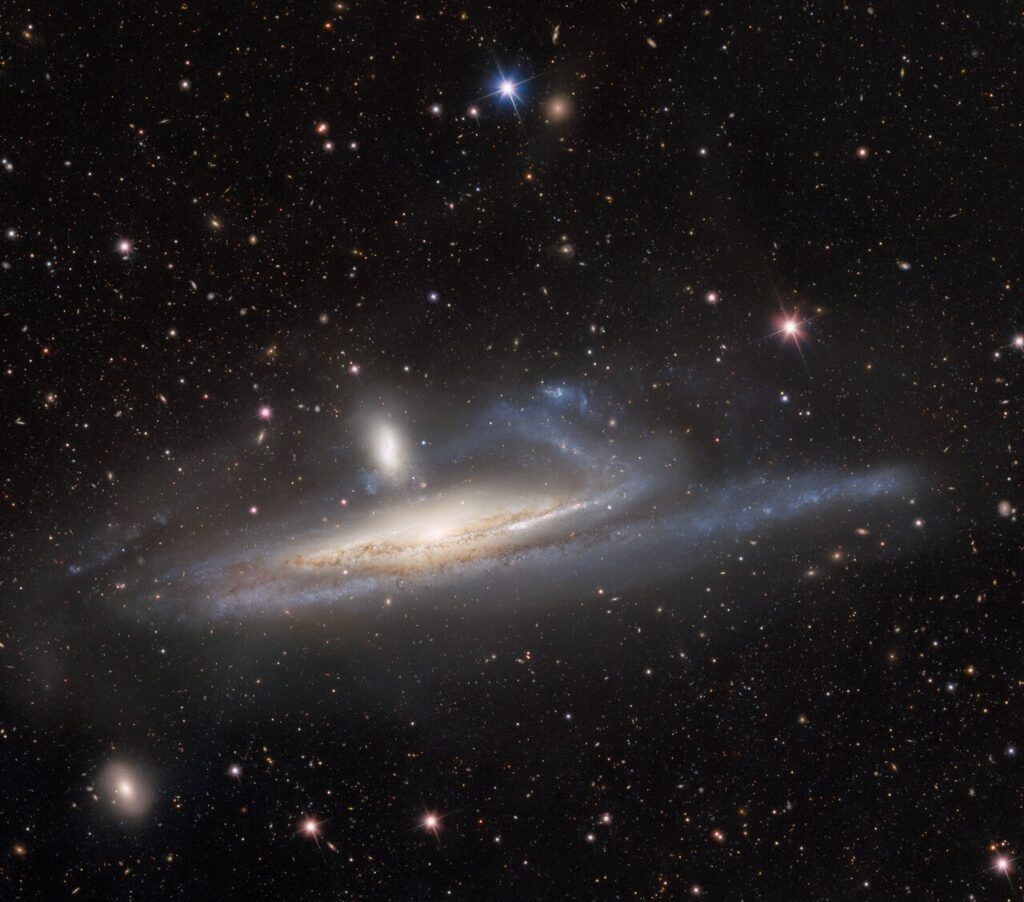The presented image was obtained by the Dark Energy Camera (DECam) installed on the 4-meter Victor Blanco Telescope at the Cerro Tololo Inter-American Observatory in Chile. It shows a pair of galaxies that will soon begin their merger.

The main object in the DECam image is the spiral galaxy NGC 1532. It is located at a distance of about 55 million light-years from Earth in the direction of the southern constellation Eridanus. In the photo, its sweeping spiral arms are clearly visible. One of them goes down, while the other stretches upwards towards the bright object hanging over NGC 1532. It is a smaller dwarf companion galaxy NGC 1531.
Now both galaxies are in a stage that can be figuratively compared to a one-sided tug of war. The more massive NGC 1532 is gradually pulling NGC 1531 towards itself and will completely absorb it in the future. However, despite its small size, the dwarf galaxy also has a noticeable gravitational influence on its larger companion. In addition to the distorted spiral arm, it is expressed in the “bridge” connecting them. It consists of gas and dust torn out by tidal forces. In addition, the gravitational interaction also caused bursts of star formation in both galaxies.
This one-sided cosmic tug of war is a clear example of how large galaxies grow and evolve, absorbing their smaller neighbors and their matter. Our Milky Way is no exception. Astronomers have found traces of a number of galaxies absorbed in the distant past in its halo.
The process of absorption of a smaller companion galaxy is strikingly different from the merger of two spiral galaxies of comparable size. In the latter case, they collide, forming a completely new galaxy with its own shape and characteristics. This is the future that awaits our Milky Way when, in four billion years, it will begin to merge with the Andromeda Galaxy.
According to https://noirlab.edu
Follow us on Twitter to get the most interesting space news in time
https://twitter.com/ust_magazine
